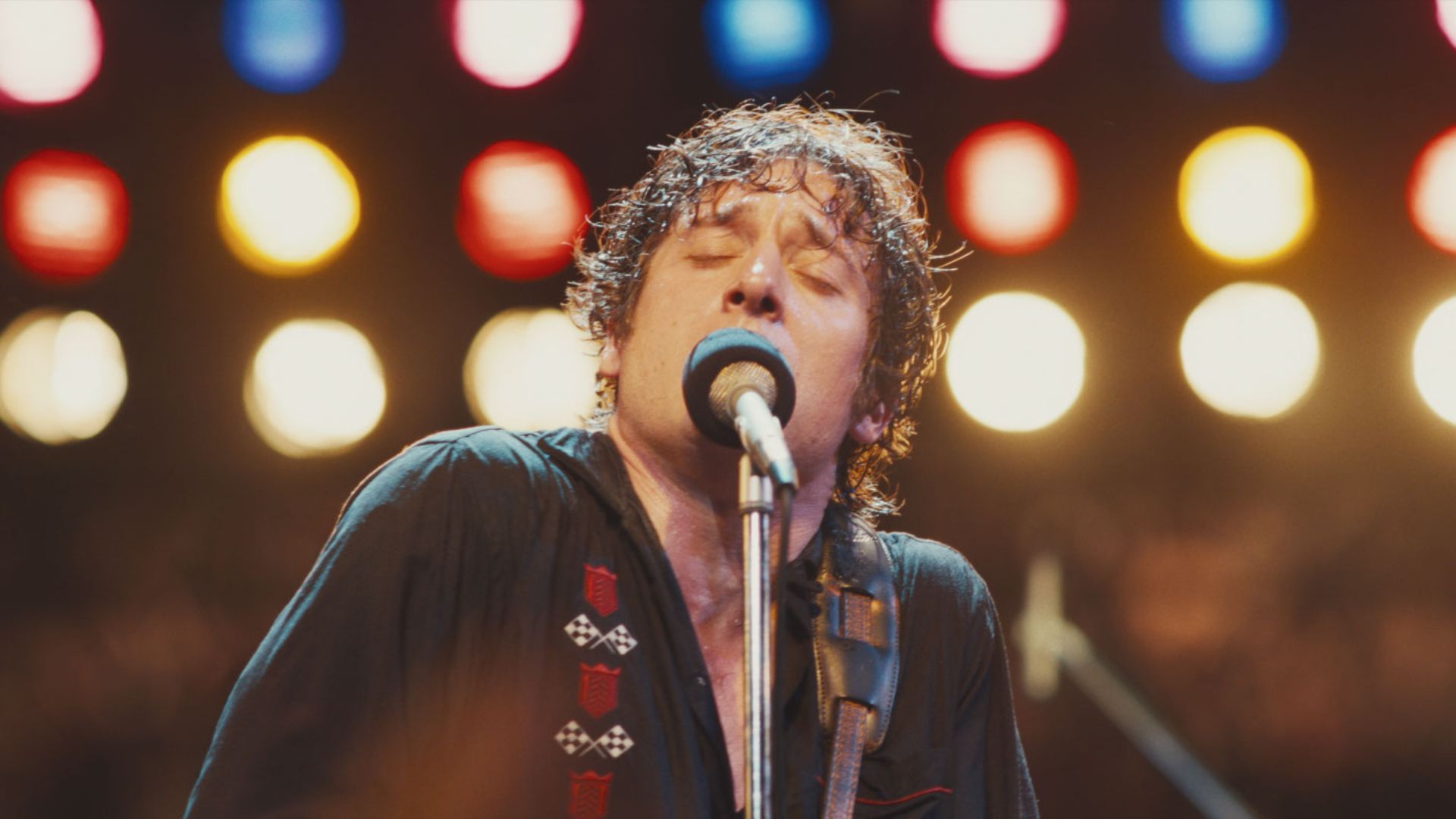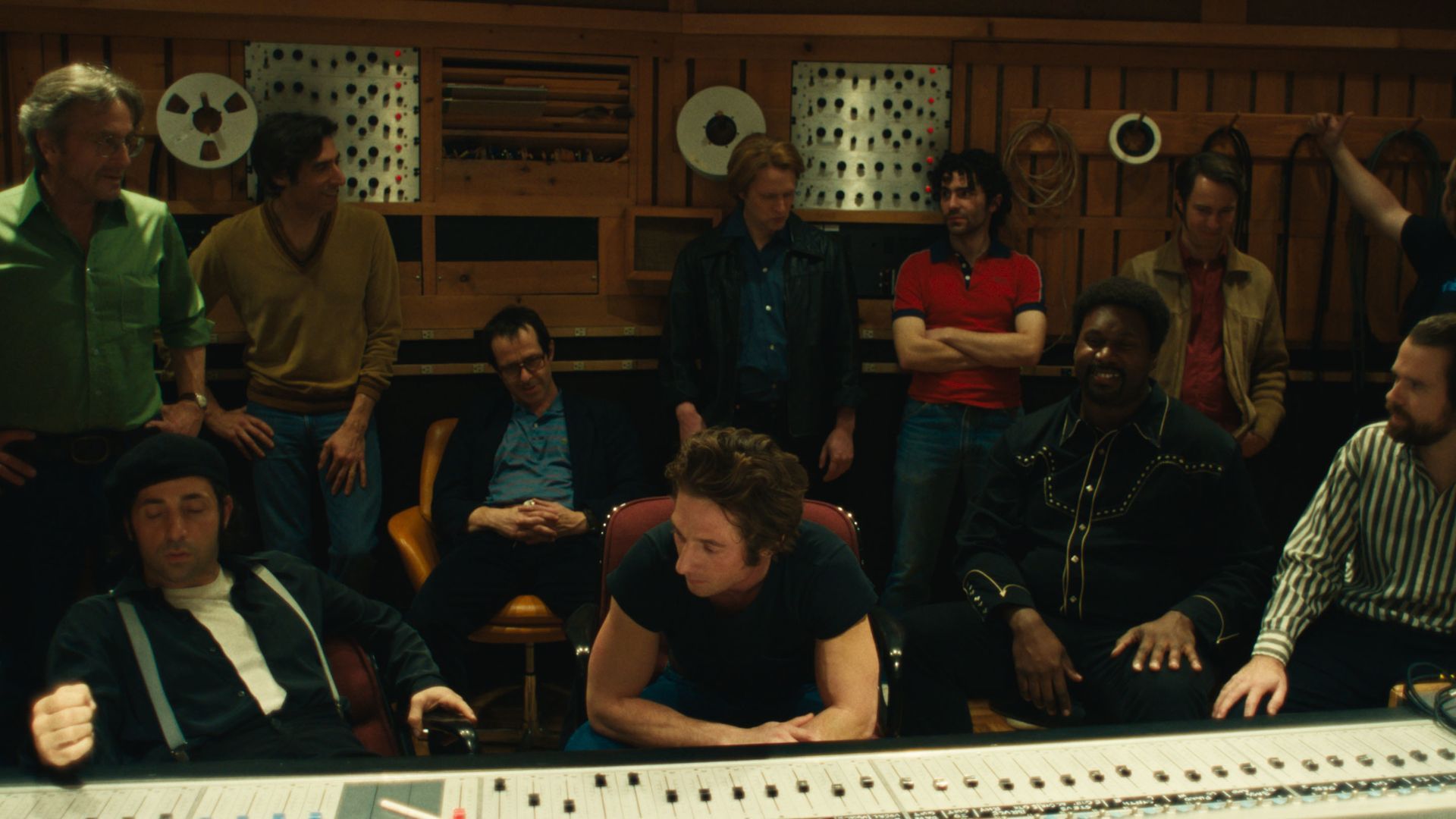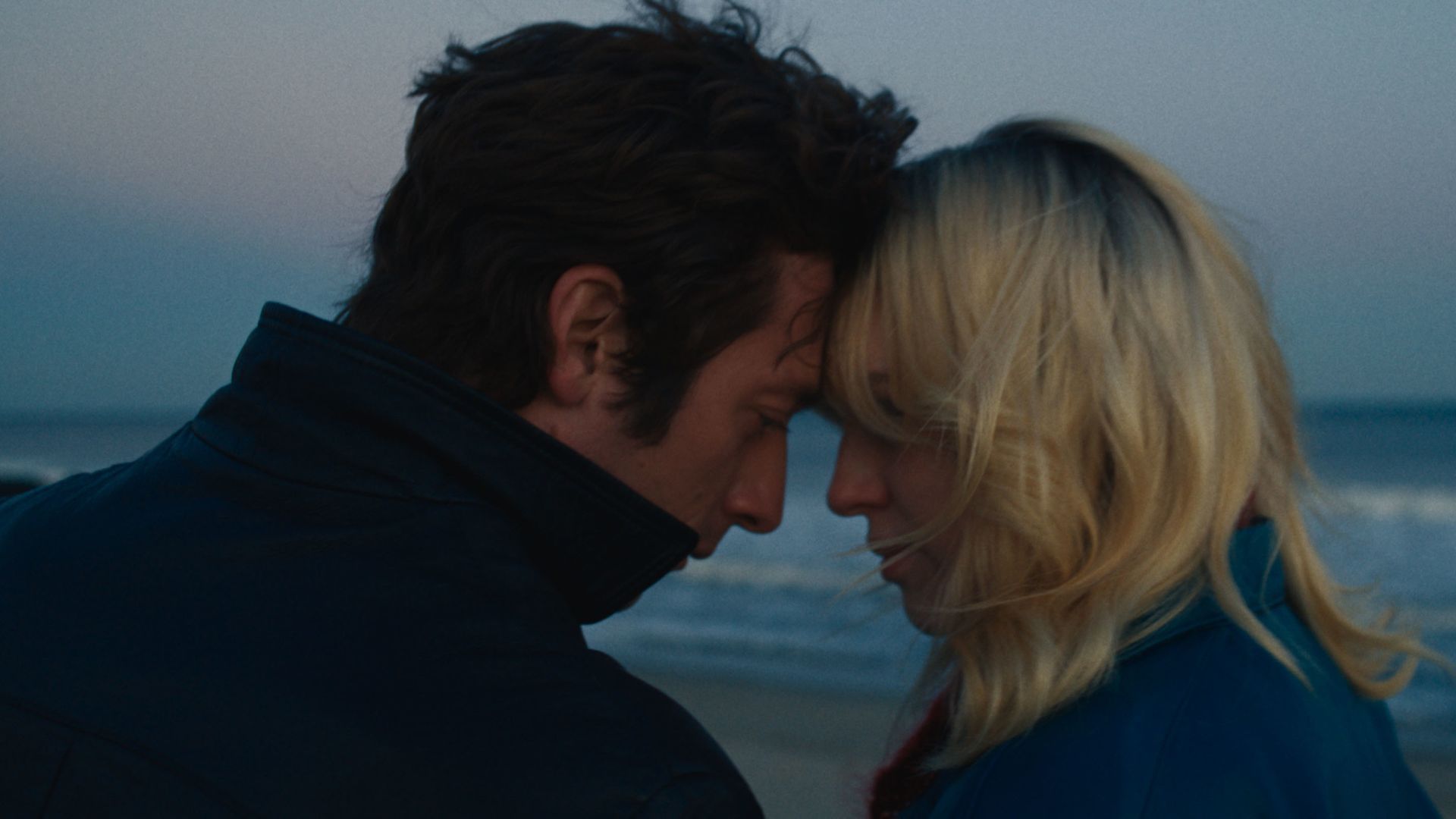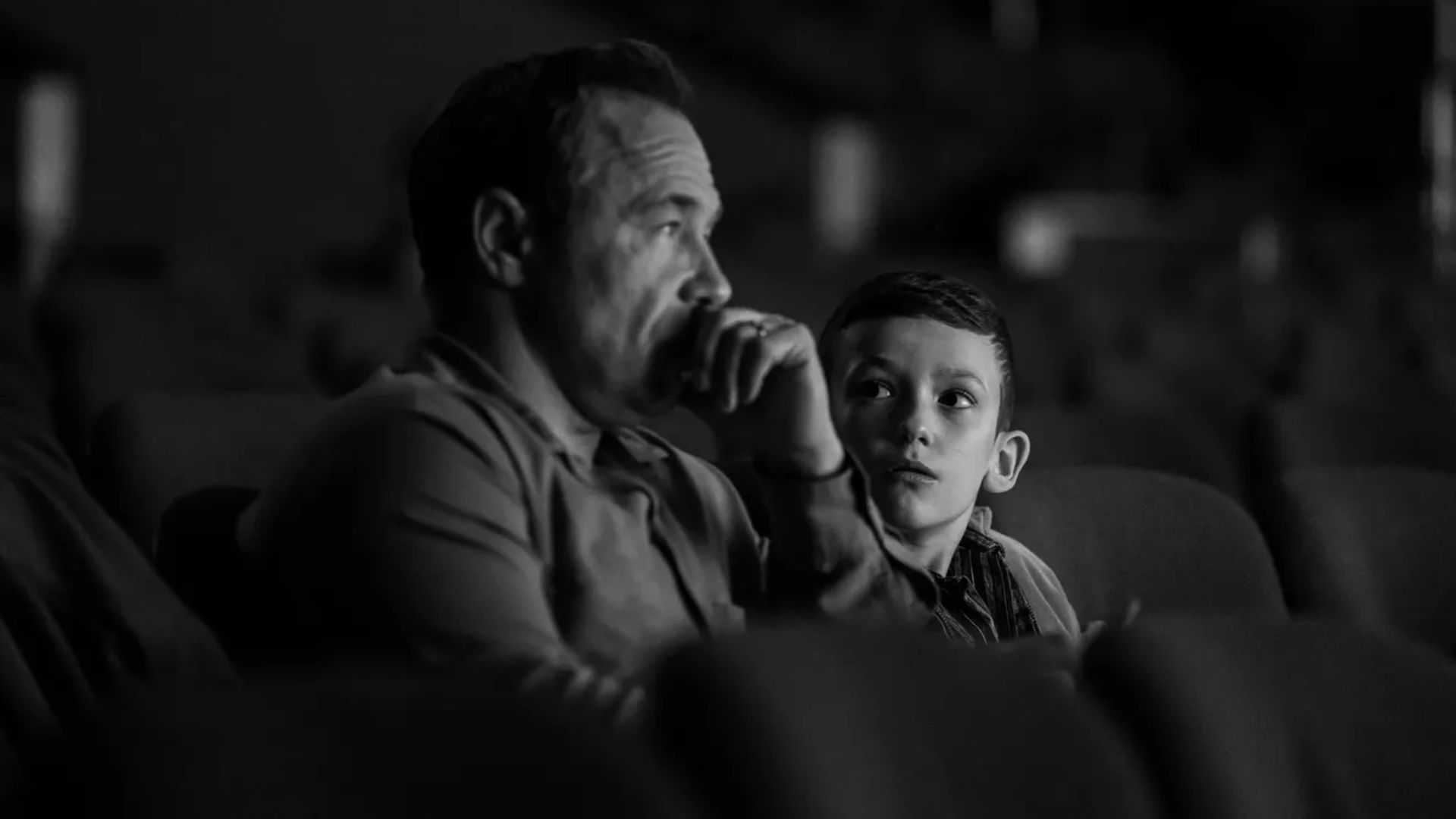
Movies about musicians’ lives are often hits, as seen with films like Bohemian Rhapsody and Walk the Line. While some of these films take liberties with the truth to add excitement, Scott Cooper’s new biopic about Bruce Springsteen, Springsteen: Deliver Me From Nowhere, starring Jeremy Allen White, aims for a more accurate portrayal of the singer’s life.
The film Deliver Me From Nowhere isn’t a typical biography of Bruce Springsteen’s rise to fame. Instead, it centers on a particularly challenging period in his life. Following the success of albums like Born to Run, Darkness on the Edge of Town, and The River, Springsteen took a risk with Nebraska – a stark, stripped-down album recorded without his E Street Band. Based on Warren Zanes’ book, the film reveals Springsteen’s personal struggles with his father as he wrote Nebraska in isolation at a rented house.
‘Deliver Me From Nowhere’ Gets the Music Right

20th Century Studios
The documentary Deliver Me From Nowhere accurately portrays the making of Springsteen’s album Nebraska. Following his The River tour in 1981, Springsteen began writing new songs while renting a house in Colts Neck, New Jersey. The film shows a conversation where his manager, Jon Landau, advises him to be mindful of costs for the next album, as The River had exhausted the budget. Springsteen historically faced challenges controlling recording expenses, notably during the 14-month production of Born to Run. This financial context sets the stage for the central conflict in the film, which centers on Springsteen’s unique and unconventional approach to recording Nebraska.
Bruce Springsteen bought a cassette recorder to practice songs at home before recording them with his band in the studio. The movie highlights that these initial recordings would eventually be used for his album, Nebraska. While he did attempt to record the songs with the band—as shown in the film—he wasn’t satisfied with the results.
Footage from the Colts Neck sessions reveals the origins of Springsteen’s album, Nebraska. The film shows Springsteen finding inspiration for the title track after watching Terrence Malick’s Badlands (a different song than his earlier “Badlands”) on TV, prompting him to write about murderer Charles Starkweather. These recordings also capture the development of songs that would later appear on Born in the U.S.A., including the title track, “I’m on Fire,” and “Glory Days.” Deliver Me From Nowhere further details the album’s creation, such as Springsteen playing the glockenspiel—an instrument he often used—and utilizing a water-damaged boombox for the final mix.
The documentary Deliver Me From Nowhere includes accurate details from the period. For example, the demo cassette from Colts Neck is always shown without a case, which is historically correct. A conversation in the film reveals that Jon Landau showed Bruce Springsteen a screenplay by Paul Schrader for a movie originally titled Born in the U.S.A., intended to star Springsteen himself. While the film never materialized as Born in the U.S.A., the script inspired Springsteen’s song of the same name, and eventually became Light of Day, featuring Joan Jett and Michael J. Fox. The documentary also highlights Landau’s observation that Springsteen made a good decision by not giving Donna Summer his song “Cover Me,” as he had previously allowed other artists, like Manfred Mann, to record his hits, such as “Blinded by the Light.”
Faye Romano Never Existed

20th Century Studios
While the movie Deliver Me From Nowhere gets most details right, it takes one significant liberty with the story. Bruce Springsteen did hang out at The Stone Pony, but he never actually met the character of Faye Romano, played by Odessa Young. She’s a fictional creation. The filmmakers based Faye’s character on Springsteen’s various casual relationships during the making of his Nebraska album, drawing inspiration from biographies like Born to Run and Darkness on the Edge of Town. As Odessa Young explained to Stylist, she had a lot of freedom to create the character because she wasn’t asked to portray a specific real person.
Besides Matt Delia, who is inspired by a friend from Springsteen’s youth, she’s one of the only characters who isn’t a musician or part of Springsteen’s family. Despite this, she plays a key role in the film. She gives Springsteen a romantic connection without revealing the identities of the people he actually dated, and her character helps explore his feelings about his father.
Bruce Springsteen’s Relationship With Family, Explained

20th Century Studios
Family is central to the film Deliver Me From Nowhere, with flashbacks in black and white depicting Bruce Springsteen’s upbringing. These scenes often feature Bruce and his father, Douglas, portrayed powerfully by Stephen Graham. The dynamic between them feels remarkably authentic, echoing moments from Springsteen’s autobiography, Born to Run. For example, one scene shows young Bruce grabbing a baseball bat after hearing his parents argue and swinging it at his father, who responds with laughter – a moment directly taken from a story in Springsteen’s memoir.
Bruce Springsteen’s father struggled with mental health issues and was eventually diagnosed with paranoid schizophrenia. This deeply affected Bruce, and he experienced a breakdown while working on his album Nebraska, as documented in a film about his life. In his memoir, Springsteen describes a search for his father, who had gone missing, eventually finding him in a bar in San Francisco’s Chinatown. They then went to McDonald’s for breakfast. The film portrays this event, omitting some details, such as an altercation Douglas Springsteen had at the McDonald’s.
The film Deliver Me From Nowhere delves into Bruce Springsteen’s complex relationship with his father, presenting it without taking sides. For instance, a scene showing Bruce’s father taking him to see the film The Night of the Hunter – a movie Springsteen later referenced in his song “Cautious Man” – feels like a warm father-son moment, but also hints at Bruce’s underlying fear of his father. This push and pull – was Douglas Springsteen a kind or damaging father? – is a recurring theme in Springsteen’s work, as seen in performances like his rendition of “The River” at the LA Coliseum in 1985. Deliver Me From Nowhere is currently playing in theaters.
Read More
- When Perturbation Fails: Taming Light in Complex Cavities
- Fluid Dynamics and the Promise of Quantum Computation
- Where Winds Meet: Best Weapon Combinations
- Jujutsu Kaisen Execution Delivers High-Stakes Action and the Most Shocking Twist of the Series (Review)
- 3 PS Plus Extra, Premium Games for December 2025 Leaked Early
- TikToker Madeleine White Marries Andrew Fedyk: See Her Wedding Dress
- 7 Most Overpowered Characters in Fighting Games, Ranked
- Hazbin Hotel season 3 release date speculation and latest news
- Prime Video’s Hit “Anti-Woke” Action Series Continues Its Success on Streaming
- Superman’s Breakout Star Is Part of Another Major Superhero Franchise
2025-10-25 17:03